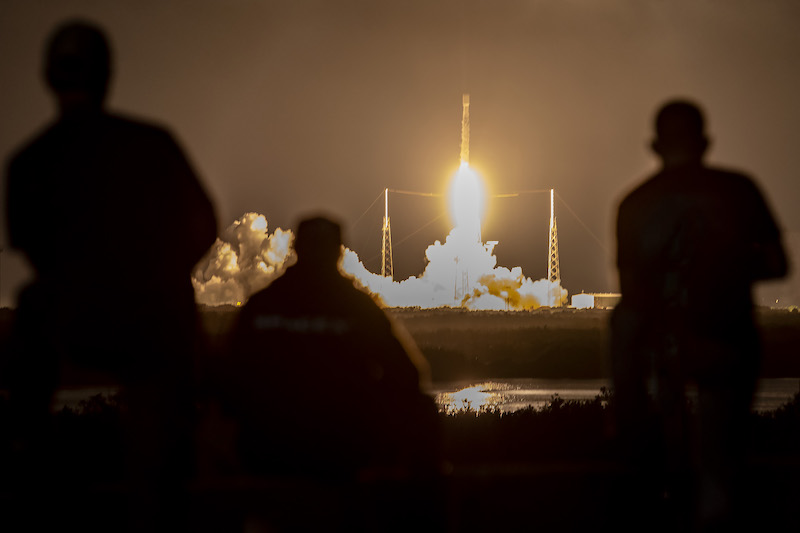
Upcoming Starlink launches in September 2023
Starlink Group 6-19: September 28, 2023, 6:53 – 11:24 p.m. EDT
Falcon 9 Block 5 | Cape Canaveral, Florida | DATE/TIME MAY CHANGE
Upcoming launches will most likely be livestreamed exclusively on X/ Twitter. SpaceX has recently discontinued using YouTube for its broadcasts.
Looks like SpaceX is going all in on X. YouTube streams for Crew 6 splashdown and Starlink 6-12 webcasts have been removed and will now be streamed on X. Also links to all social media networks deleted from the SpaceX website menu.
— Steven Young (@stevenyoungsfn) September 3, 2023
Previous Starlink launches in September 2023
Starlink Group 7-3: September 25, 2023, 1:48 a.m. PDT
Falcon 9 Block 5 | Vandenberg Space Force Base, California | SUCCESS
Starlink Group 6-18: September 23, 2023, 11:38 p.m. EDT
Falcon 9 Block 5 | Kennedy Space Center, Florida | SUCCESS
Starlink Group 6-17: September 19, 2023, 11:38 p.m. EDT
Falcon 9 Block 5 | Kennedy Space Center, Florida | SUCCESS
Starlink Group 6-16: September 15, 2023, 11:38 p.m. EDT
Falcon 9 Block 5 | Kennedy Space Center, Florida | SUCCESS
Starlink Group 7-2: September 11, 2023, 11:57 p.m. PDT
Falcon 9 Block 5 | Vandenberg SFB, California | SUCCESS
Starlink Group 6-14: September 8, 2023, 11:12 p.m. EDT
Falcon 9 Block 5 | Kennedy Space Center, Florida | SUCCESS
Starlink Group 6-12: September 3, 2023, 10:47 p.m. EDT (2:47 UTC September 4)
Falcon 9 Block 5 | Kennedy Space Center, Florida | SUCCESS
Starlink Group 6-13: August 31, 2023, 10:21 p.m. EDT (2:21 UTC September 1)
Falcon 9 Block 5 | Cape Canaveral, Florida | SUCCESS
Starlink Stats Pages https://t.co/xcBLHG65pn updated: 5070 launched, 4724 in orbit https://t.co/SzCNHlnfuH
— Jonathan McDowell (@planet4589) September 9, 2023
On September 6, a Starlink satellite that launched in July and failed to make orbit burned up in spectacular fashion over the Caribbean.
After launch, look for a train of lights
Following every Starlink launch, the internet buzzes with people asking:
What’s that long line of lights in the sky that looks like a train?
What you’re seeing is the Starlink satellites moving into a higher orbit. You can check to see if they will pass over your area using the Find Starlink website.
Growing numbers amid controversy
According to Spaceflight Now, Starlink now consists of over 5,000 mass-produced small satellites in low Earth orbit. They communicate with designated ground transceivers and provide internet access to more than 1.5 million subscribers.
Starlink, as of now
?? for animations of each group individually#Starlink #SpaceX ?????? pic.twitter.com/XrvTgG1Lpu
— Flight Club (@flightclubio) September 18, 2023
Love ’em or hate ’em, these Starlink satellites are part of SpaceX’s vision for a global internet communication satellite constellation. They deliver high-speed internet service worldwide, mainly to locations where ground-based internet is unreliable, unavailable, or expensive. The private company is well-known for launching batches back-to-back, several times a month, regularly lofting 60 satellites at a time. And SpaceX plans to build up to perhaps as many as 30,000 eventually.
Most thought it was exciting to see the first few Starlink satellites traveling together in the night sky. But then more were launched, and then more. And astronomers began to worry.
Because Starlinks are bright, astronomers say they’re photobombing astronomical images. Therefore, they have the potential to interfere with the professional astronomical observations that have brought us our modern-day view of the cosmos. And although SpaceX has tried to address the issue, they remain far from what astronomers say is acceptable.
Bottom line: SpaceX’s ninth and final Starlink launch for the month is currently scheduled from Florida at 6:53 – 11:24 p.m. EDT on September 28, 2023.
Read more from EarthSky: Starlink satellites can look like a plume or train of light

